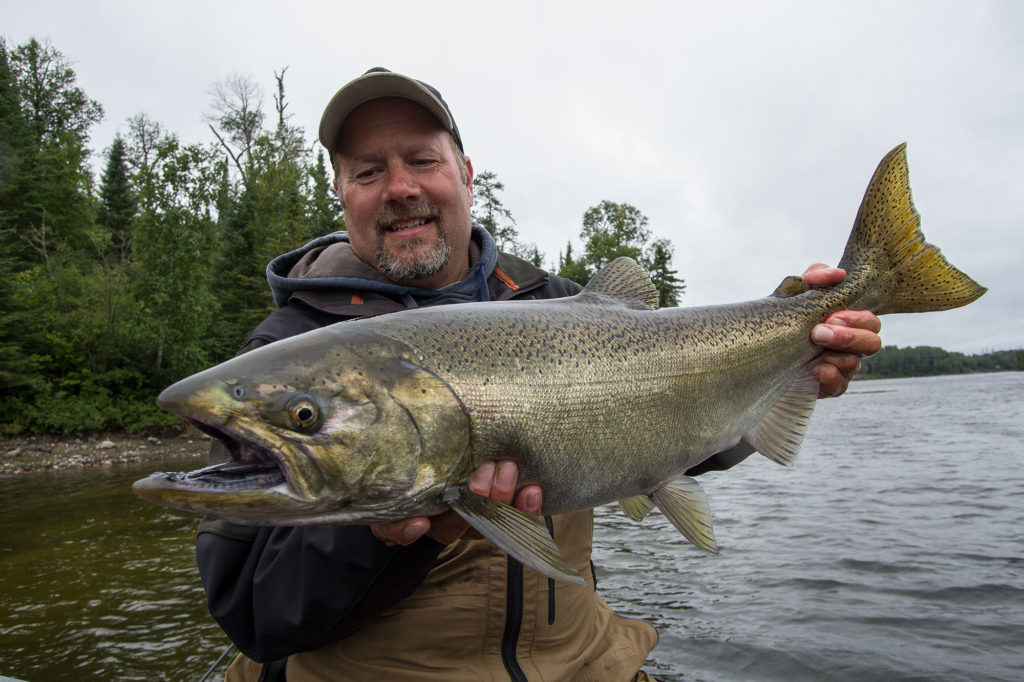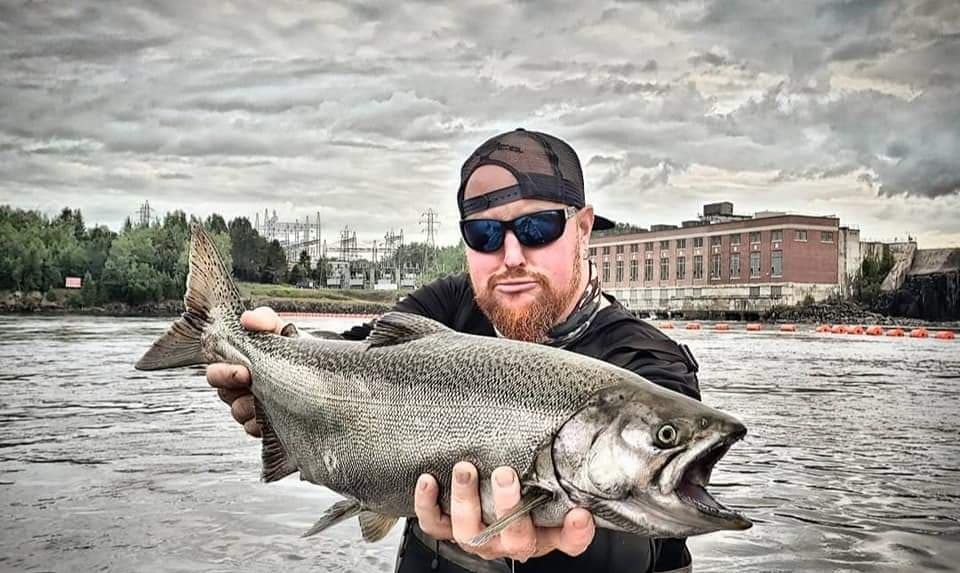
10 Salmon Facts
Back to Superior Country BlogSuperior Country is home to many great fisheries, the Nipigon River is among the most popular. Due to it’s location, the wide range of fish that inhabit the river and its history makes it an anglers paradise. One of the most favored fish species in the river (aside from the Brook Trout) is Salmon. There are three main species of Salmon that reside in the Nipigon River, Chinook Salmon, Pink Salmon and Coho Salmon. Although not native, they were introduced and naturalized in the Great Lakes and now spawn in the river, the Salmon run occurs in the fall seasons. However, these species can be found year round in the river.
1. Scientific Name
All three of these species share the same genus, Oncorhynchus. This indicates they’re in the Salmonidae family. Their specific species name is what differentiates them. The Chinook Salmon is the Oncorhynchus Tshawytscha. The Pink Salmon is known as Oncorhynchus Gorbuscha, and the Coho Salmon being Oncorhynchus Kisutch.
Their nicknames vary widely, the list below shows just a few over each species:
Chinook Salmon – Chinnys, King Salmon, Tsumen and Quinnet Salmon.
Pink Salmon – Pinks, Humpback Salmon, Humpies and Minnies.
Coho Salmon – Silver Salmon and Silvers.

2. Lifespan
Chinook – 4-5 years on average.
Pink – 2-3 years on average.
Coho – 4-5 years on average.

3. Size
Chinook – Average length is between 12-39 inches while average weight is 7-15lbs.
Pink – Pinks average 18 inches in length and weigh only 3-4lbs.
Coho – The average length is 12-30 inches while weighing 5-10lbs.
4. Spawning
Once they’ve returned to their original origin area of birth, Salmon will spawn. The spawn usually occurs in the fall, it will sometimes be later or earlier than other years depending on the population in the tributary and of course, water temperatures. The female will dig a redd in the base of the stream/river and release her eggs (thousand of eggs!), the male will then produce his sperm and both will protect the nesting site. They expel an enormous amount of energy between migrating to their spawning site, undergoing spawn and protecting the nest. This is why shortly afterwards, they’ll die, even before their eggs hatch.

5. Habitat
Once they’re born Salmon juveniles stay in closer range of their tributary within the Great Lakes. Then, they’ll span their range and swim all throughout where they’ll mature. Maturing to their spawning age can take anywhere from 3-5 years, depending on the specific species. Within this time, they will have travelled far and wide. Once spawning seasons approaches, they begin the trek back to their original spawning site to forego their own spawning habits. With that being said, they change habitats a lot throughout their lives, from stream/river, to all throughout the Great Lakes, and back to the original stream/river.
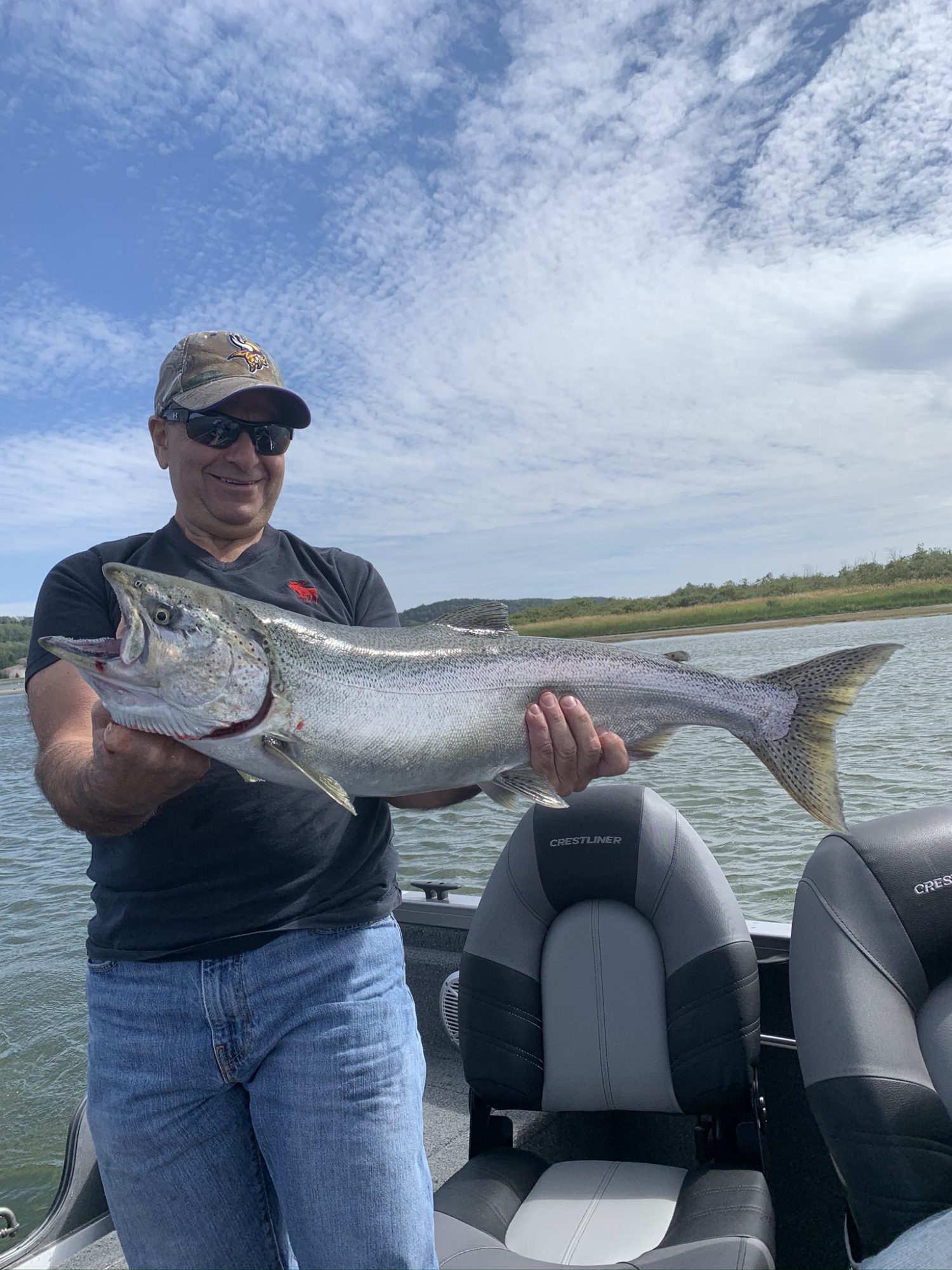
6. Diet
As juveniles, Salmon will feed on aquatic insects and invertebrates. Once larger and matured, their diet will consists mainly of smaller/juvenile fish.
7. Common Baits & Lures
Chinook Salmon – Chinnys are very light sensitive, therefore, it is rare to be finding them feeding on the surface. Most anglers down rig for Salmon in general, but Chinnys especially. Plugs and Spoons are among the most popular lures to reach for when down rigging (or even just trolling) for them. Baiting with salmon eggs or live bait is a favored tactic as well.
Pink Salmon – Personally speaking, I’ve caught Pinks on all sorts of lures and bait variations. I never target the species but in the fall always catch dozens. During this time I am usually using flashy plus (mainly vibrant orange or red), but I’ve also seen them caught on spoons, jig heads with twister tails and a worm… my experience is that they’ll go for anything if you put it in front of them.
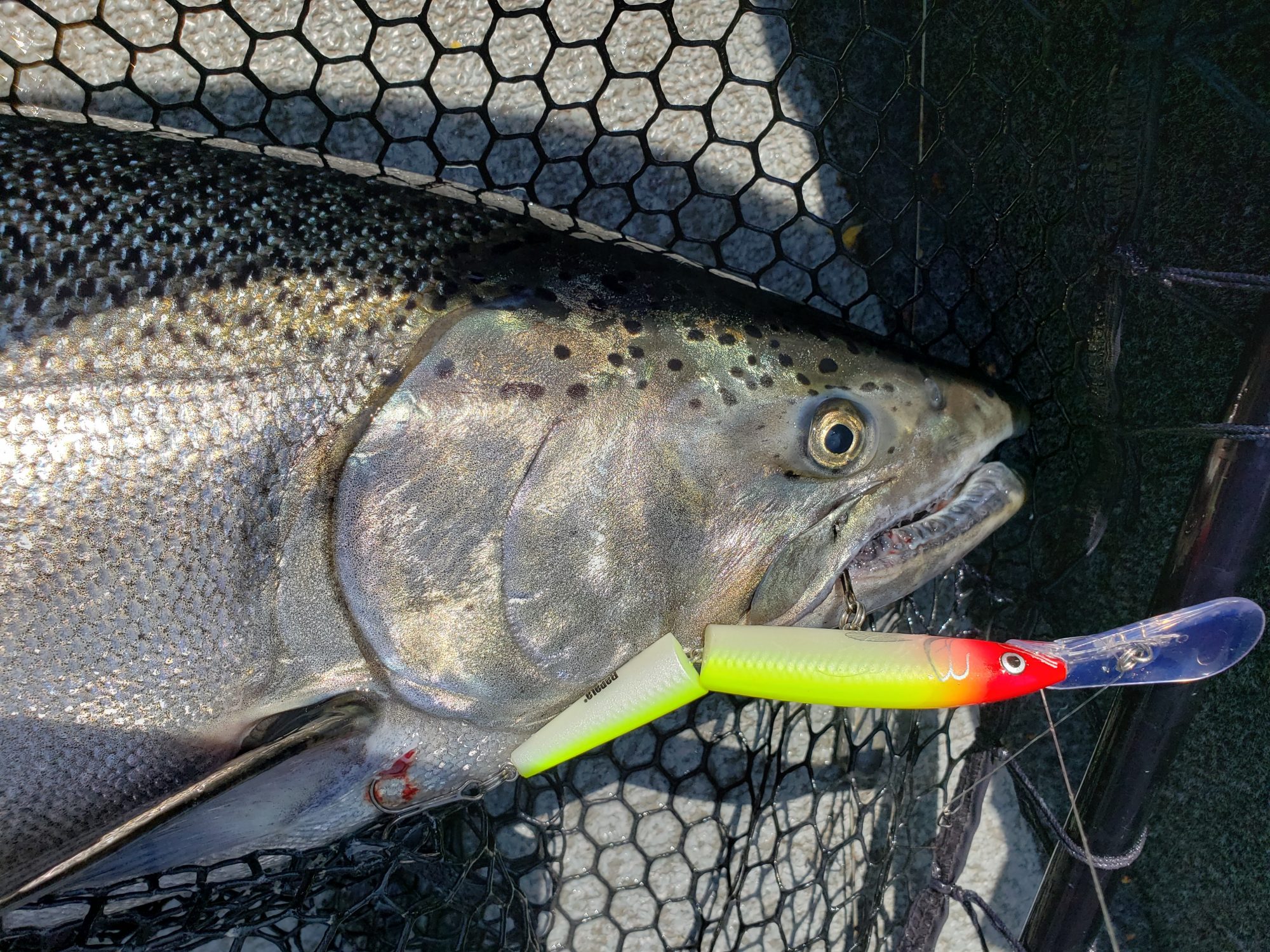
Coho Salmon – In different from Chinnys, you can find Cohos feeding near the surface as they are not as sensitive to light exposure. Although this does makes them easier to catch in one sense, they are typically a little more difficult as they slow down their feeding habits in the fall. Don’t let this steer you away from them, they are very territorial, it’s all about placement! They will hit lures if they come near, using lures like rattle baits and spinners that are noisy or flashy will get their attention.
8. Appearance
Chinook Salmon – Chinnys encompass a blue/green back with silver sides and a white underbelly. They have black spotted tails, these spots are also visible on their higher back as well. A key identifying feature of Chinnys are their black mouths and gums.
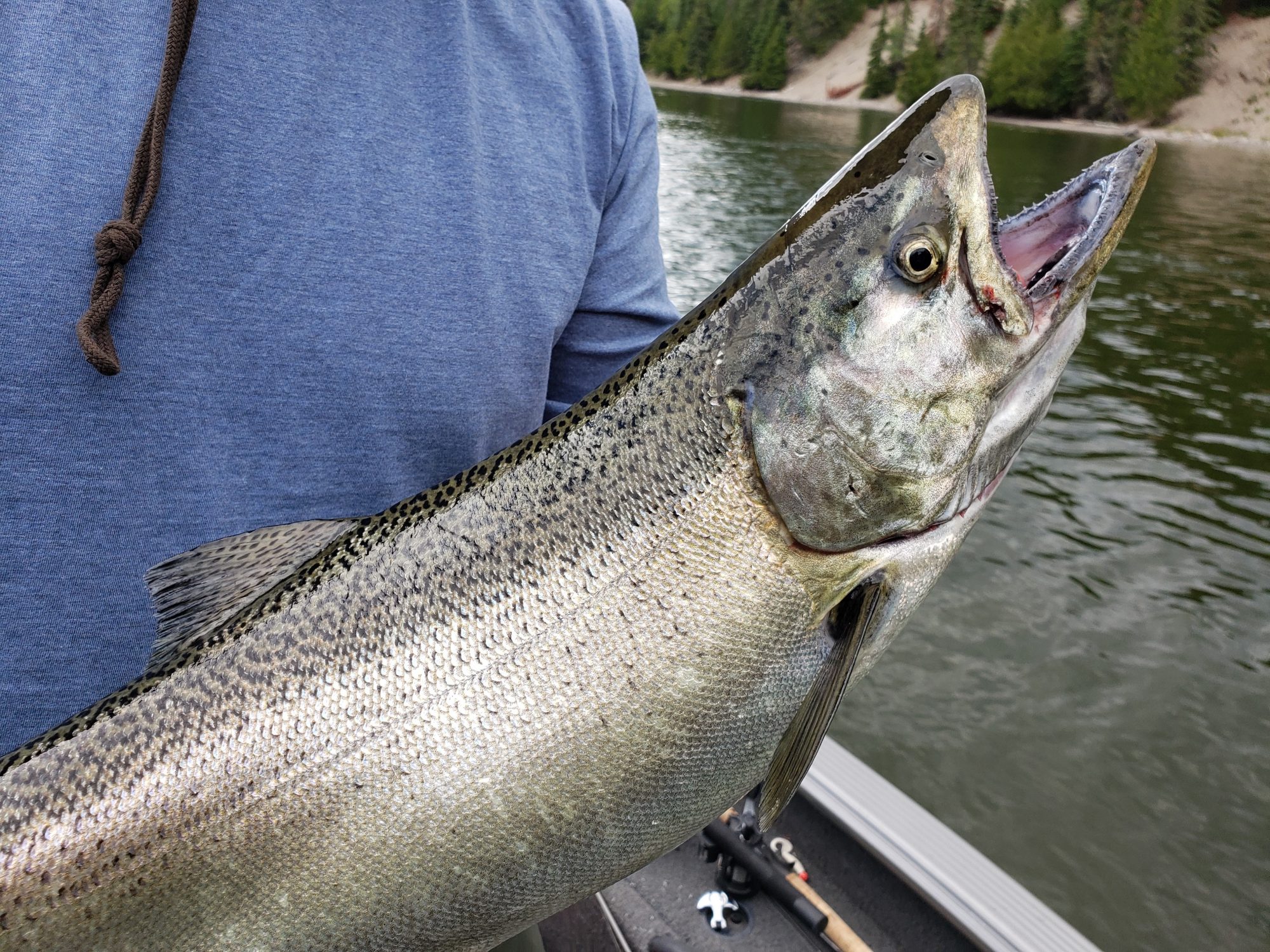
Pink Salmon – Pinks are, well, pink! This species is found in many areas and depending on their environment have different characteristics. Ones found in the Nipigon River don’t get that large and during the Salmon run in the fall showcase a very noticeable pink hue to the side of their bodies. Along with the pink hue they have a darker back, often green/brown. They have larger black spots on their backs and on their forked tails.
Coho Salmon – Coho’s are smaller than Chinnys, both of them are deep bodied however the Coho is thinner. They also have a blue/green back with silver sides and a white underbelly. The bigger difference in Coho’s and Chinnys is that while the Chinny has a fully spotted tail, the Coho only has spots on upper lobe. Also, the Cohos mouth is dark with light grey gums, rather than all black like the Chinny.

9. Nipigon River Fishing Locations for Salmon
There are three dams in the Nipigon River. The furthest up being Pine Portage, midway is the Cameron Falls dam and the lowest one is Alexander Dam. When Salmon come up the river to spawn they only can get as far as Alexander, this is due to the fact that there are no fish ladders or lifts granting them access further up the river. The distance from Alexander Dam to Lake Helen is roughly 12 kilometers, this is where most of them are located. Come fall during the fish derby the river is packed with boats of eager anglers trying to catch their new personal best for Salmon.
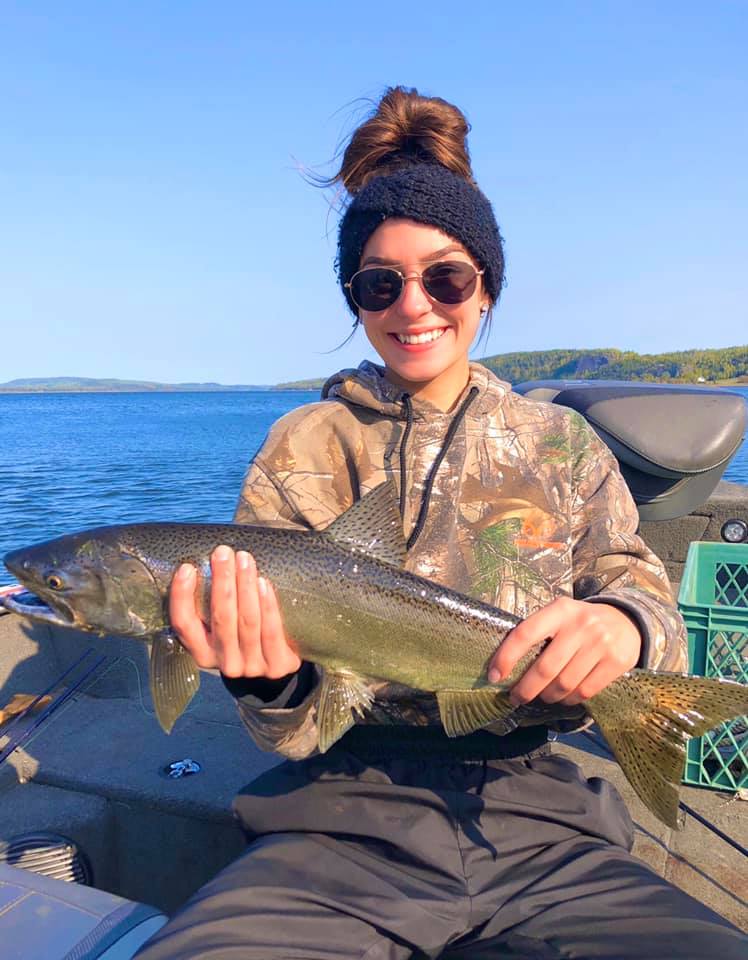
While I have caught Salmon between Lake Helen and Alexander a few time, I also found that right above Gapens Pool to be a good spot as well. The river narrows down dramatically around the corner before the Pool which is just barely upstream of the Nipigon River Bridge. There is heavy current around the bend into the pool. We typically troll the base of Lake Helen to just into the heavy current, allowing our lures to be taken down just a bit by the current. This is a rocky area with some random shallow spots – beware! We’ve nicked our prop a time or two in that area. The picture shown above is one of the Salmon I caught in that area, she was caught on September 21st for those looking for ideal time reference.
Related Article: Big Water, Big Fish
10. Ontario Records
Chinook – 46.4lbs
Pink – 13.06lbs
Coho – 28.6lbs

 Walleye
Walleye Northern Pike
Northern Pike Lake Trout
Lake Trout Brook Trout
Brook Trout Steelhead
Steelhead Salmon
Salmon Smallmouth Bass
Smallmouth Bass Perch
Perch Superior Picnics
Superior Picnics